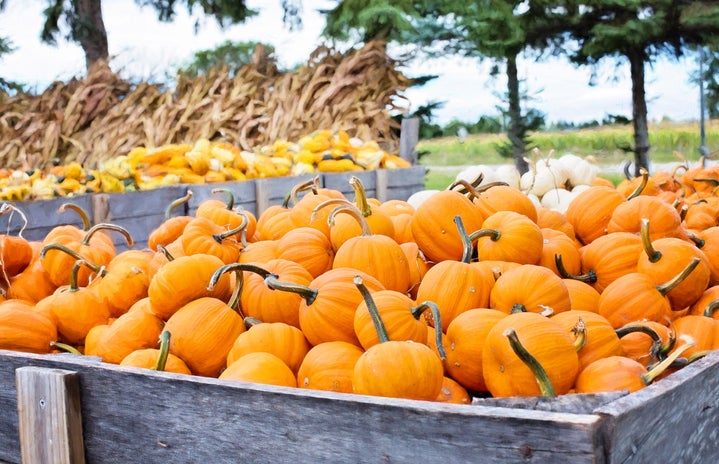The spookiest day of the year is just around the corner! On the day of Halloween itself and all throughout the month of October, we have many unique traditions. Have you ever thought about why these traditions have come to be?
1. Trick-or-Treating
Is it even Halloween if you don’t go trick-or-treating? Trick-or-treating is a staple of Halloween. If you don’t dress up and get free candy did you really observe Halloween? The origin of this tradition is much debated. The prominent theory is that during Samhain in Ireland, people would leave offerings on their doorsteps for other worldly beings that are traveling to Earth on Halloween night. Eventually, people began dressing up in a similar fashion to receive food and drink.
2. Black Cats
The mystery surrounding black cats dates all the way back to the middle ages. Back then, black cats were believed to be a symbol of the devil. Centuries later, black cats were again associated with darkness as they were believed to be a witch’s familiar. Cats and witches have been linked ever since and are rarely seen separate in today’s celebration of Halloween. Ever since the Salem witch trials, black cats haven’t been able to escape their bad rap and are still considered a bad omen if one crosses you today.
3. Costumes
The Celts are the ones to thank for our costume tradition. This has very much became a staple of Halloween today. Originally, Celts would dress up as ghosts and spirits to cleverly avoid the ones traveling to Earth with mal-intentions.
4. Bobbing for Apples
Bobbing for apples is a tradition that we often forget about. This festive game has its origins all the way back in the Roman Empire. Romans did this at a festival honoring Pamona, the goddess of agriculture and abundance. When Romans conquered the British Isles this festival was combined with Samhain and thus blended into Halloween and has been associated with fall ever since.
5. Ghosts
Ghosts are a prominent part of Halloween. Many Celts believed that spirits would walk the Earth on Halloween. They believed that Samhain marked the end of the harvest season and the beginning of winter. This sparked many other traditions that are featured in this list. Later when Christians adopted All Saint’s Day, this later reinforced the involvement of ghosts on Halloween.
6. Candy Apples
Like bobbing for apples, this dates back to the time of the Romans. The goddess Pamona, that was honored at the Roman festival was often represented by apples and fruit. However, much of this is speculation as the first known recording of candy apples being given out is from the 1950’s.
7. Candy
Going door-to-door for free things has always been a part of Halloween. However, until the 1950’s, candy wasn’t the only item one would expect to receive on all Hallow’s eve. Toys, nuts, coins or fruit were among some of the other items that we handed out. Candy companies in the 1950’s began to make individually wrapped candies in response to the growing popularity of trick-or-treating in suburban America. Because even back then we were lazy and loved convenience, candy soon became the only thing that was given out to children.
8. Black and Orange
Black and orange is a classic color combination that dates back hundreds of years. Each are very different colors, but together they effectively symbolize the essence of Halloween. Black represents the dark nature of death while orange represents the prevalent colors in nature during autumn.
9. Jack -o- Lanterns
Carving a pumpkin is much harder than it looks and is more symbolic than you may think. This tradition has a sinister origin in Ireland. According to this legend, a man named Jack repeatedly trapped the devil and only let him go contingent on the fact that he would never go to hell. At the time, this deal looked pretty good but when Jack died, heaven didn’t want him either due to his deal with the devil. Because he couldn’t go to heaven or hell, he was condemned to wonder the Earth for eternity as a ghost. The devil gave him a lump of coal to light his way. Locals caught wind of this legend and started carving scary faces in pumpkins to keep evil spirits such as Jack away.
10. Candy Corn
Candy corn are a classic treat that we all love to eat in October. They entered our lives more recently than you may think. They were invented in Philadelphia in the 1880’s, however they didn’t gain popularity until almost two decades later. At the time, candy corn was called “chicken feed.” Could you imagine this classic candy being sold in a box that said “something worth crowing for” ? What does crowing over something even mean?
The Halloween traditions we have come to know and love all have unique origins from around the world. It’s amazing how popular culture adopted Halloween in the 1950’s and it has become a core tradition that we celebrate every year. Stay spooky my friends!
Sources: Halloween Traditions, Samhain information, Thumbnail image



